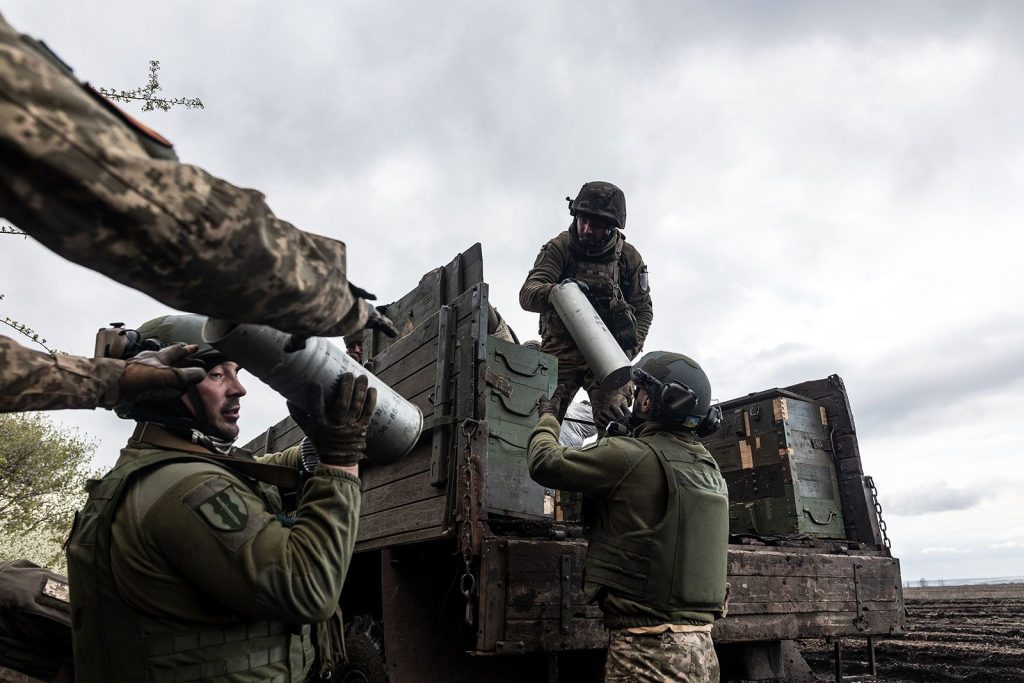Ukraine in new mobilisation drive as Russia advances
3 min read

As Russia continues its offensive in eastern Ukraine, the Ukrainian government is set to mobilize an additional 160,000 troops. This decision comes amid significant territorial gains made by Russian forces, particularly in the Donetsk region. Recently, Russia announced that it had fully captured the mining town of Selydove, heightening concerns over Ukraine’s military position.
The announcement of the mobilization was made by Oleksandr Lytvynenko, the secretary of Ukraine’s National Security Council, during a parliamentary session. He indicated that the recruitment effort would span over three months, reflecting the urgent need for reinforcements as Ukrainian forces face mounting pressure. The Pentagon has also highlighted the growing challenges for Ukraine, attributing this partly to Russia’s larger manpower and resource advantages.
In addition to internal mobilization efforts, reports have emerged about North Korean troops being deployed to Russia. The U.S. Department of Defense estimated that around 10,000 North Korean soldiers have been sent to eastern Russia for training purposes, with a “small number” already operating in the Kursk region. Furthermore, reports indicate that additional North Korean troops are en route to bolster Russian forces, with some intelligence suggesting that up to 11,000 may eventually be deployed, many of whom are purportedly donning Russian uniforms to obscure their identities.
South Korea has raised concerns about the presence of these troops, indicating that they are being trained at various sites across Russia. The involvement of North Korean soldiers adds another layer of complexity to the already strained military dynamics in the region.
Amid these developments, President Vladimir Putin acknowledged the arrival of North Korean troops in Russia without outright denying their deployment. This follows reports suggesting that Pyongyang was preparing to send thousands of troops to assist its ally in the ongoing conflict.
The new mobilization effort by Ukraine follows legislation passed in April that facilitates the drafting of troops to counter the Russian invasion. Under this law, all men aged between 25 and 60 are required to register their details in an electronic database to ensure their availability for military service. Conscription officers are actively seeking out those who evade registration, leading many men to go into hiding to avoid being called up.
This legislative move aims to significantly bolster Ukraine’s military ranks, which are currently under immense strain as Russian forces continue to press forward. The situation is particularly dire in the eastern regions, where Moscow has successfully captured strategic locations.
With Selydove now under Russian control, attention has shifted to the nearby city of Pokrovsk, a critical transport hub located just 18 kilometers (about 10 miles) away. Control over Pokrovsk would enhance Russia’s logistical capabilities and further consolidate its hold on the region.
Ukraine’s ongoing military operations also extend into the Kursk region of Russia, which commenced in August. This incursion indicates Ukraine’s commitment to reclaiming territory and countering Russian advances, even as it faces significant internal and external challenges.
As Ukraine ramps up its mobilization efforts, the situation in the eastern front remains fluid and precarious. The combination of increased troop numbers, the involvement of foreign military forces, and the ongoing territorial contest in Donetsk underscores the escalating nature of the conflict.
With international attention focused on the evolving dynamics, Ukraine’s next steps will be closely scrutinized. The mobilization of additional troops signals the country’s determination to resist Russian advances and defend its territorial integrity, even as the situation grows increasingly complex.
As the conflict continues, the implications of these developments could resonate far beyond the borders of Ukraine, influencing regional security and international diplomatic relations. The next few months will be critical in determining the outcome of this ongoing struggle, as both sides prepare for a potentially protracted confrontation.